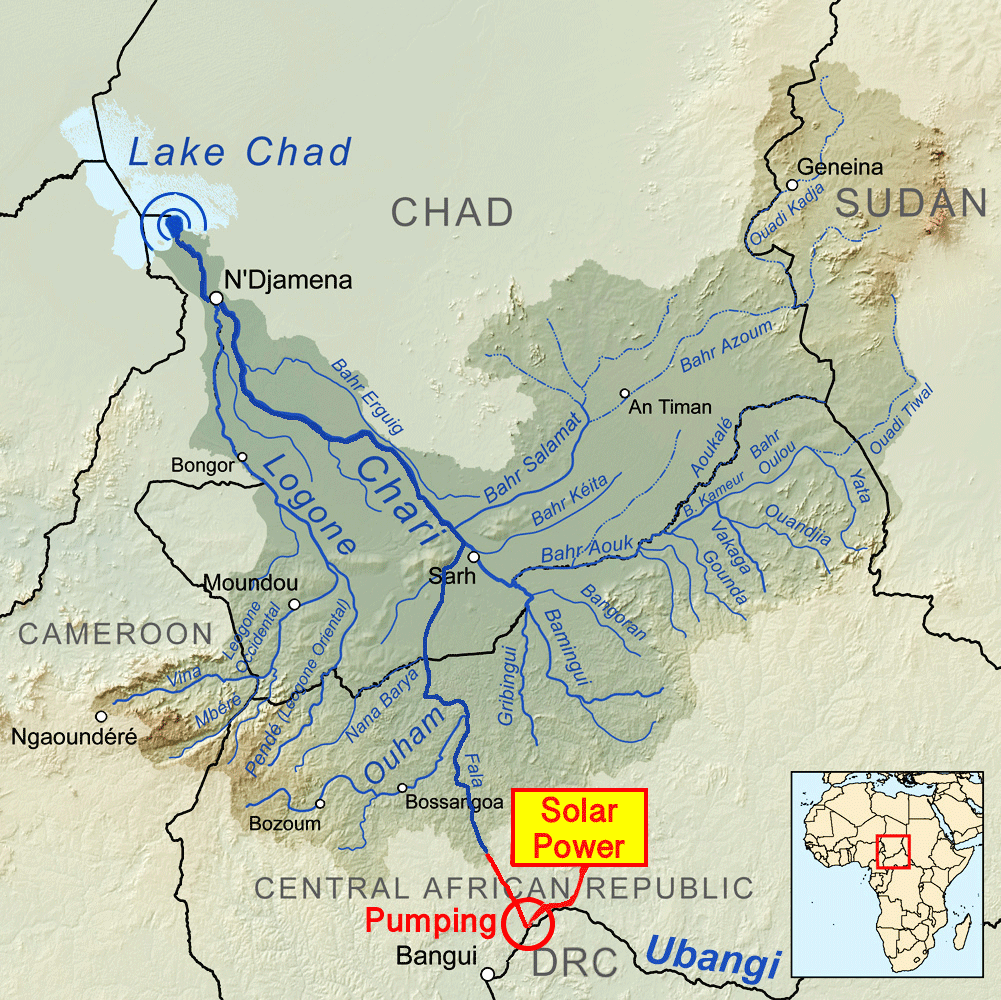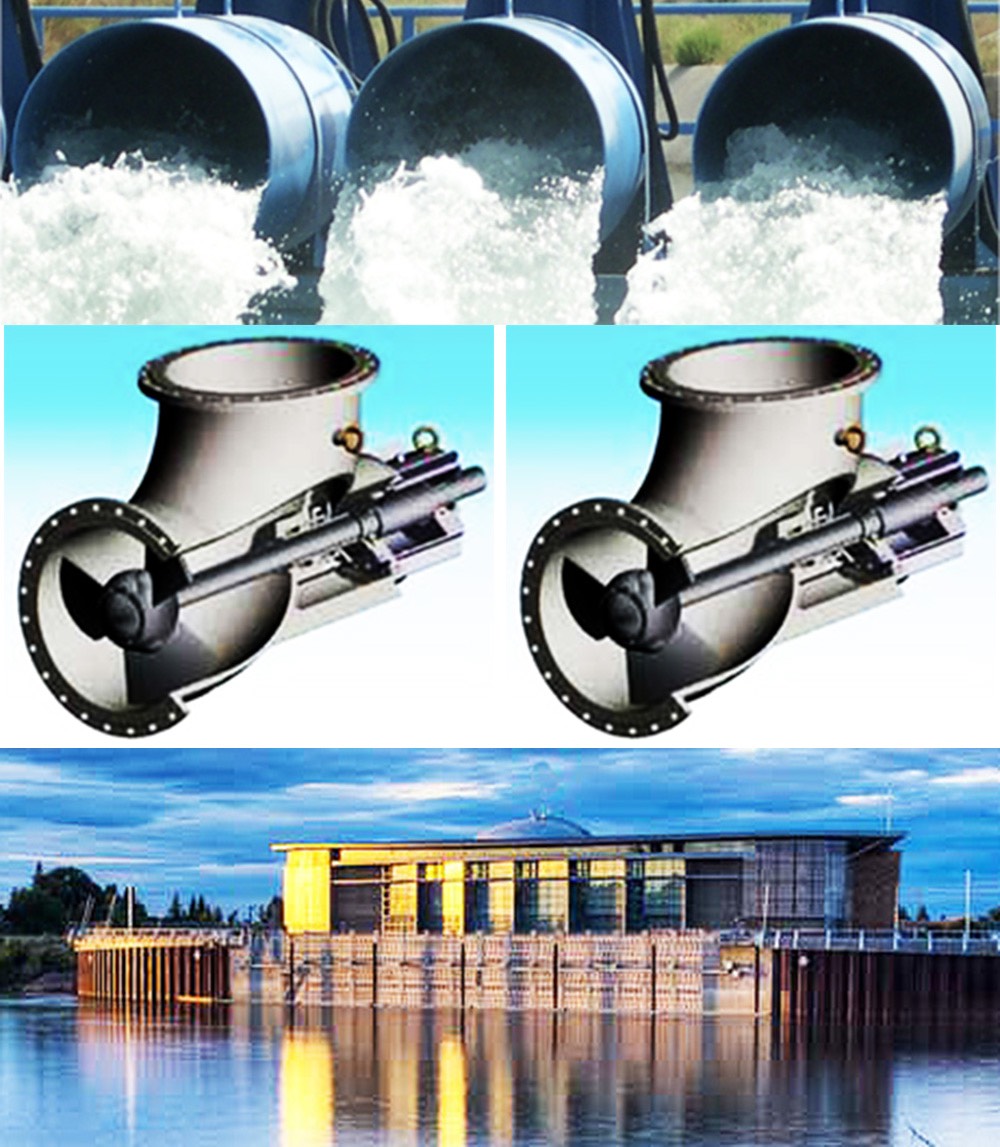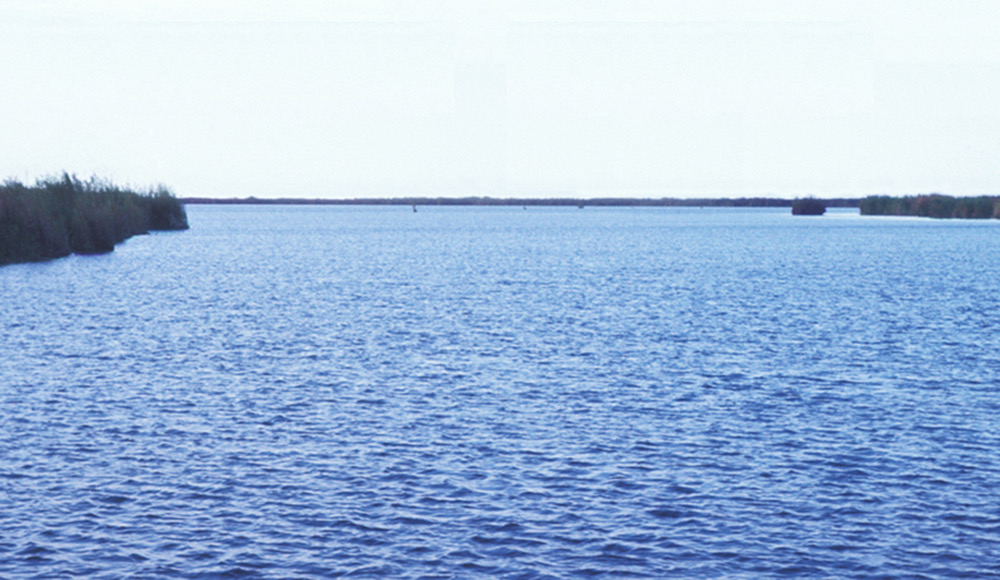[next page: Technical Study & Terms of Reference description]
Solar Option Design Concept
Solar powered pumps on the Ubangi River will pump water through 128 kilometers of pipelines up 180 meters to the inter-basin crest, where it will flow by gravity through canals and rivers for 1000 km to Lake Chad.

Map of Chari River Drainage Basin – Showing Staged Pumping to Lake Chad
Staged Pipeline Construction
The Solar Option would allow staged construction (unlike a dam), and thus provide an earlier start to water transfer to Lake Chad. Each new stage will add pumping capacity. Stage 1 installs one pipeline and Stage 2 adds a grid-scale battery. The remaining 3 stages add three more parallel pipelines. In the future, more batteries and solar panels will be added, so that all 4 parallel pipelines will pump water 24 h/d. The project size can be scaled up, as needed.
The Technical Paper sample project specifies four parallel 5 meter diameter pipelines, that run 128 km to lift water 180 meters. The specified grid-scale 1000 MWh battery is big enough to keep only one pipeline pumping 24 hrs. per day. The other three pipelines would initially pump only 8 hrs per day. The rationale is that making at least one pipeline operate 24 h/d keeps water continuously flowing in the canals and rivers to Lake Chad.
The project cost of $267M is for this configuration, which pumps about half the amount of water that the hydroelectric dam would (taking 1 year instead of 6 m to increase the area of Lake Chad by 3000 square km). This is more than offset since water transfer pumping will start much earlier under the Solar Option than the hydroelectric dam.
Adding more grid-scale batteries will require additional solar panels to charge them, while water is simultaneously pumped in 4 pipelines. The sample project is staged to allow an earlier start to pumping to renew Lake Chad. Also, by the time the final stages (3-5) are constructed, adding additional battery storage will be less expensive, allowing 24 h/d pumping in all four parallel pipelines. New battery technologies will eventually lower energy storage costs, as has been the case with solar panels.

Water Intake, Pumps, and Pipelines
Cost of Ubangi Pipelines
The Solar Option is far less expensive than a hydroelectric dam to capture and pump water from the Ubangi to replenish Lake Chad. The other major cost driver of the IBWT project is the pipelines themselves. The cost of the Ubangi pipelines also justifies the use of grid-scale battery energy storage, to maximize pumped water and pipeline use.
In the Technical Paper example, four parallel conduits, each 5 meters in diameter, run for 128 km on a gradual uphill grade to lift the water 180 meters to the inter-basin crest. These are very big pipes with a static pressure of about 17.6 atm (256 PSI) at the bottom (and more when pumping). The total volume of a single pipeline is about 2.56 million cubic meters, which equals 2.56 million tonnes of water. At a flow rate of 100 cubic m/s, the speed of flow in the pipelines is about 1.25 m/s, or about 4.5 km/h (about human walking speed). The CIMA Feasibility Study estimated the cost of 128 km of Ubangi pipelines at $7.3 billion dollars, by far the most expensive component of the IBWT project. A new engineering study is needed to update the pipeline costs.
Reduced Environmental Impacts
The Solar Option is not only less expensive, it will also have lower environmental impacts than a dam. Pumping from submerged water intakes means no flooding of the Ubangi River – and no displacement of villages and residents. Inter-Basin Water Transfer of 100 cubic meters per second to Lake Chad will use only 0.7% to 5% of the Ubangi River flow (depending on seasonal variations) This will not impact fishing or navigation. In addition, this water use will not compromise the energy potential of the planned Inga Hydroelectric dams in the Democratic Republic of Congo. All required infrastructure will be in the Central African Republic, with none in the Democratic Republic of Congo

Lake Chad Filled with Water
Water transfer using solar power will increase the area of Lake Chad by 3000 square kilometers in 1 year, depending on the amount of water taken for irrigation. Each succeeding year, the area of the lake will grow larger.
This is an ambitious mega-project. The goal is nothing less than to pump a small river – a new source of water – to restore Lake Chad.
[next page: Technical Study & Terms of Reference description]